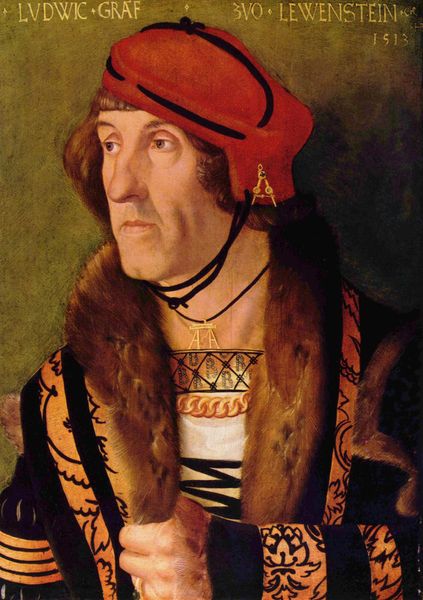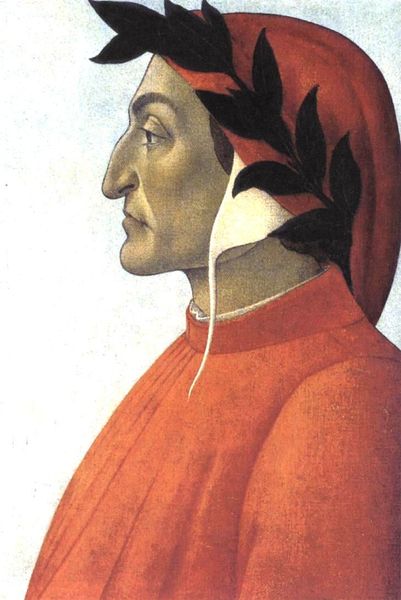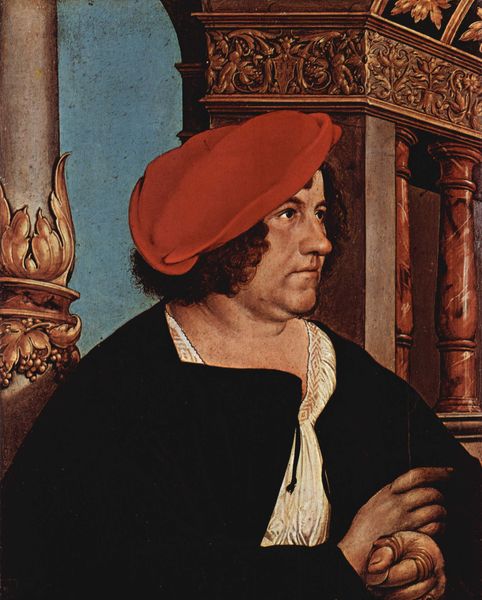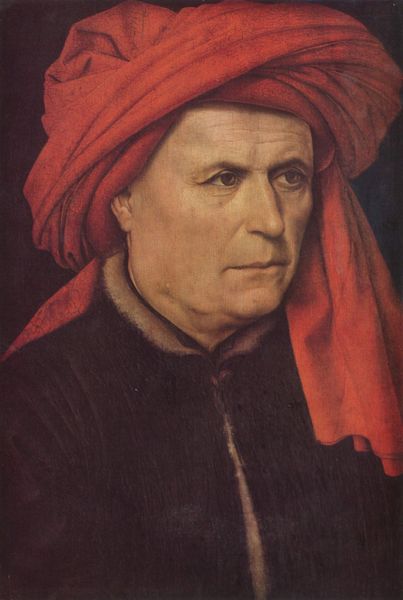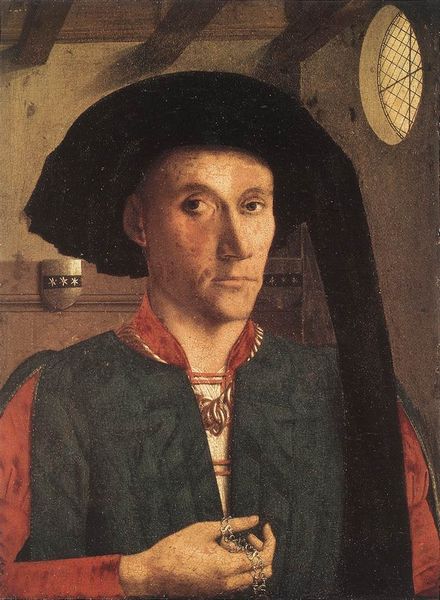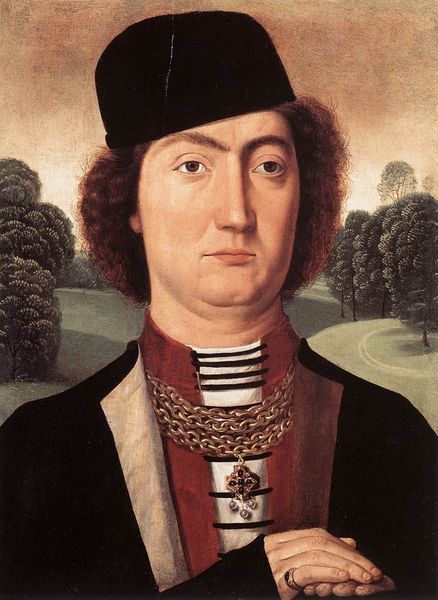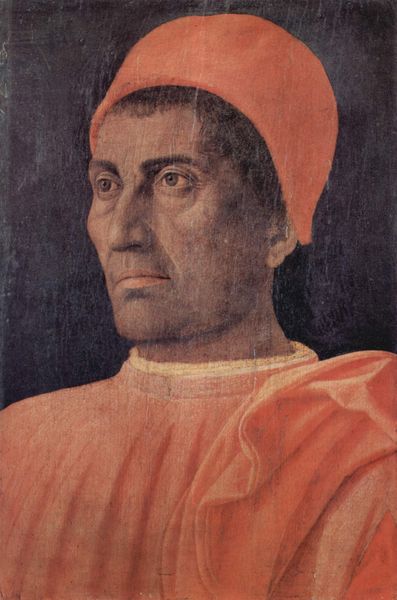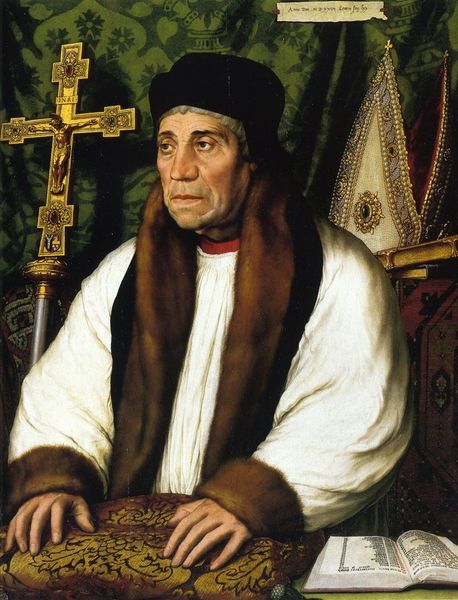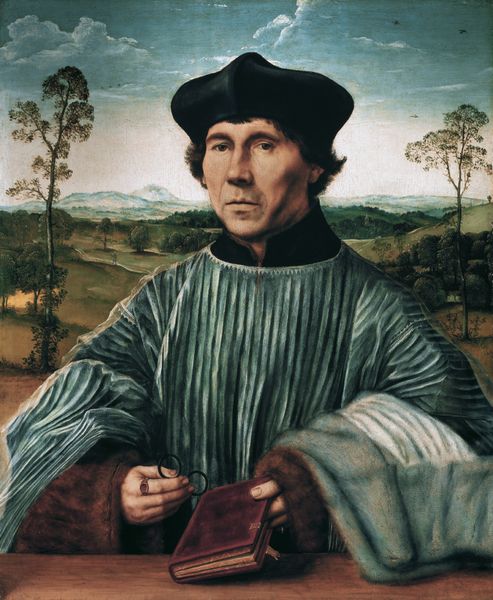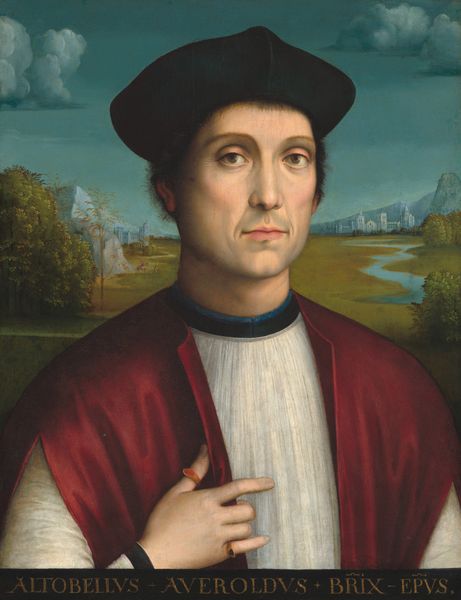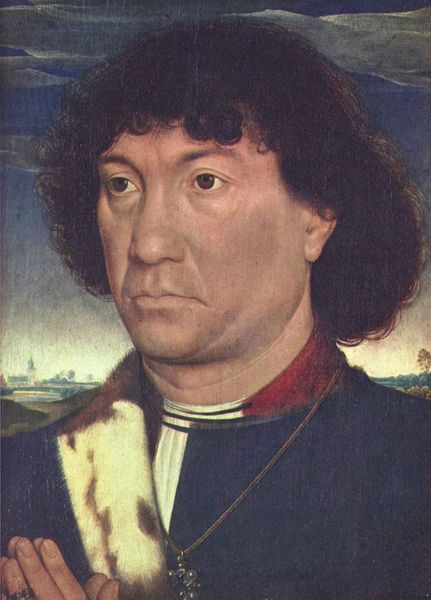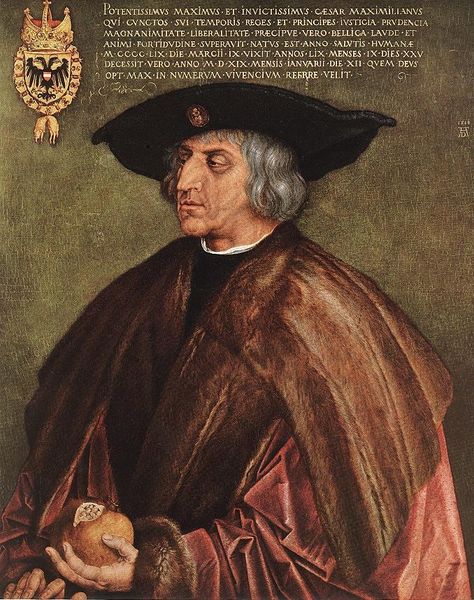
Dimensions: 73 x 66 cm
Copyright: Public domain
Editor: This is Kazimir Malevich’s "Self-Portrait" from 1933, an oil painting held at the Russian Museum. The direct gaze is captivating and a little unnerving. How would you interpret the visual language in this portrait? Curator: Malevich is costuming himself, drawing on a Renaissance or even earlier symbolic lexicon. What does it evoke for you—this deliberate self-presentation? Is he looking to history to shape his own narrative, maybe hinting at the lineage of abstract art? Editor: I guess I hadn't really thought of him putting on a costume – interesting. So, the old-fashioned clothing, is it about legitimizing his art through this reference to established art history? Curator: Precisely! And the color choices… consider the powerful use of red against the dark tones. Red has so many connotations—power, revolution, sacrifice. In the context of Soviet Russia, these resonate intensely, right? Editor: That makes sense, the timing with Soviet Russia is key. It's more than just aesthetics, it is Malevich speaking with visual symbols. Do you think he wanted to connect with an earlier sense of revolutionary zeal, before the consolidation of Stalinist power? Curator: Exactly! It seems he aimed to imbue himself and, perhaps, his art with the strength of those traditions while navigating a politically complex period. Visual memory connects. Does this resonate with how you view his other works, especially his Suprematist pieces? Editor: It makes me reconsider the power of images themselves to hold cultural weight. I will have to think about how his abstract language connects with this representational painting. Curator: Indeed. Seeing beyond the surface, exploring the layered meanings that visual forms carry, is a path to deeper understanding.
Comments
No comments
Be the first to comment and join the conversation on the ultimate creative platform.
